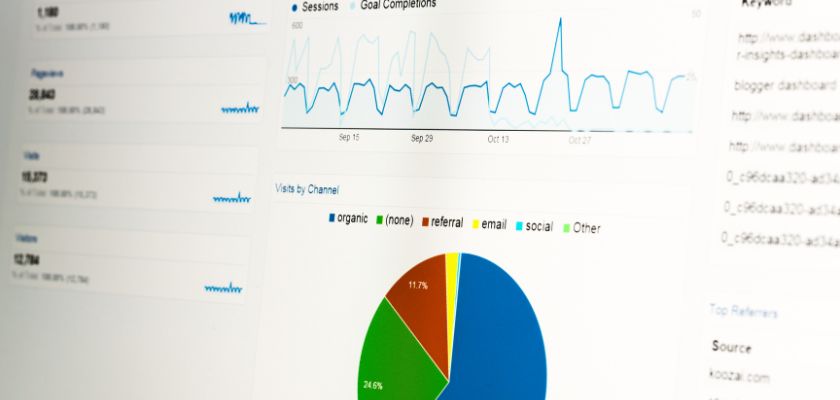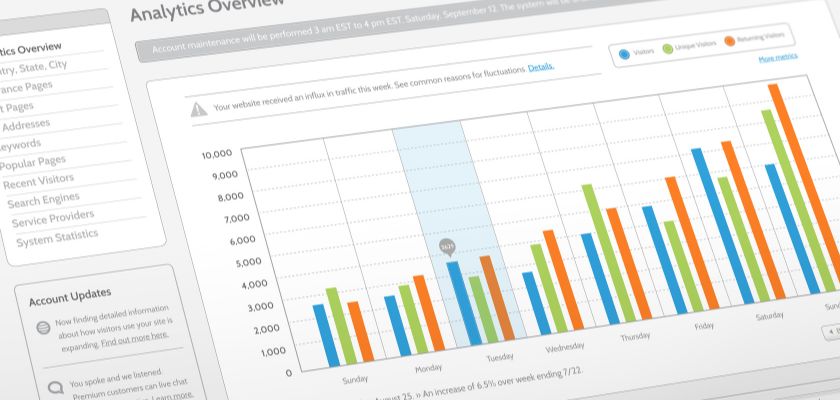Google Analytics is an essential tool for any website owner or digital marketer. It provides detailed insights into website performance, user behavior, and the effectiveness of your marketing strategies. Understanding how to use Google Analytics for SEO can significantly enhance your website’s performance, drive more organic traffic, and improve your overall SEO strategy. This article will explore the importance of Google Analytics in SEO, how to set it up, and how to leverage its features effectively, including integrating GMB for local SEO and the benefits of professional SEO services.
Setting Up Google Analytics

Creating a Google Analytics Account
Before you can start using Google Analytics, you need to create an account. This process is straightforward and requires a Google account.
Step-by-Step Guide
- Sign Up for Google Analytics: Visit the Google Analytics website and sign in with your Google account. Click on “Start for free” to create your account.
- Set Up Property: Enter your website’s name, URL, industry category, and time zone.
- Get Tracking ID: Google Analytics will generate a unique tracking ID for your website. You need to add this ID to your website’s code to start collecting data.
Adding Google Analytics to Your Website
Integrating Google Analytics with your website is crucial for tracking and analyzing data.
Using Google Tag Manager
Google Tag Manager simplifies the process of adding Google Analytics to your website. It allows you to manage all your tracking codes in one place.
- Set Up Google Tag Manager: Create an account and a container for your website.
- Add Google Analytics Tag: Add a new tag in Google Tag Manager, select “Google Analytics: Universal Analytics,” and enter your tracking ID.
- Publish the Container: After setting up the tag, publish the container to activate the tracking.
Direct Integration
If you prefer not to use Google Tag Manager, you can directly add the tracking code to your website’s HTML.
- Copy the Tracking Code: Copy the tracking code generated by Google Analytics.
- Paste into HTML: Paste the code into the HTML of your website, just before the closing </head> tag.
- Verify Integration: Check your Google Analytics account to ensure data is being collected.
Configuring Google Analytics Settings
Proper configuration ensures that you get accurate and relevant data.
Setting Up Goals
Goals in Google Analytics help you track specific user actions, such as form submissions, purchases, or page views.
- Navigate to Goals: Go to the Admin section, and under the View column, click on “Goals.”
- Create New Goal: Click on “New Goal” and select a template or create a custom goal.
- Configure Goal Details: Enter the goal details, such as destination URL, duration, pages/screens per session, or event.
Linking Google Search Console
Linking Google Search Console with Google Analytics provides additional insights into your website’s SEO performance.
- Access Property Settings: In the Admin section, go to the Property column and click on “Property Settings.”
- Adjust Search Console Settings: Scroll down and click on “Adjust Search Console.” Follow the prompts to link your Search Console account.
Leveraging Google Analytics for SEO

Tracking Organic Traffic
Understanding the sources of your website’s traffic is fundamental for SEO.
Analyzing Traffic Sources
Google Analytics provides detailed reports on where your traffic comes from, including organic search, direct, referral, and social media.
- Navigate to Acquisition Reports: Go to Acquisition > All Traffic > Channels to see a breakdown of your traffic sources.
- Filter for Organic Traffic: Click on “Organic Search” to view traffic coming from search engines.
Monitoring Keyword Performance
Monitoring the performance of your keywords helps you understand which terms drive the most traffic and conversions.
- Check Queries Report: In the Acquisition section, navigate to Search Console > Queries.
- Analyze Keyword Metrics: Look at metrics such as impressions, clicks, average position, and click-through rate (CTR) to evaluate keyword performance.
User Behavior Analysis
Understanding how users interact with your website can highlight areas for improvement.
Analyzing Behavior Flow
Behavior Flow in Google Analytics shows the path users take through your website, from the landing page to exit.
- Access Behavior Flow Report: Go to Behavior > Behavior Flow to visualize user paths.
- Identify Drop-Off Points: Look for high drop-off points where users leave your site and investigate why this might be happening.
Tracking Page Performance
Analyzing individual page performance helps you optimize content and user experience.
- Navigate to Site Content: Go to Behavior > Site Content > All Pages.
- Evaluate Key Metrics: Look at metrics such as page views, average time on page, bounce rate, and exit rate to assess performance.
Enhancing Local SEO
For businesses targeting local audiences, integrating GMB for local SEO with Google Analytics provides valuable insights.
Tracking GMB Traffic
Google My Business (GMB) can drive significant traffic to your website. Tracking this traffic in Google Analytics helps you understand its impact.
- Set Up UTM Parameters: Add UTM parameters to your GMB URL to track clicks.
- Analyze GMB Traffic: Go to Acquisition > Campaigns > All Campaigns to see traffic from your GMB profile.
Monitoring Local Search Performance
Monitoring how your website performs in local search results is crucial for local SEO.
- Use Search Console Data: In Google Analytics, link to Google Search Console to view local search queries.
- Analyze Local Metrics: Look at metrics such as impressions, clicks, and average position for local search queries.
Utilizing Professional SEO Services
While Google Analytics provides valuable insights, professional SEO services can help you maximize its potential.
Expert Analysis and Strategy
SEO professionals have the expertise to analyze your Google Analytics data and develop effective SEO strategies.
- Comprehensive Audits: SEO services conduct comprehensive audits to identify strengths and weaknesses in your SEO strategy.
- Tailored Recommendations: Receive tailored recommendations to improve your website’s SEO performance based on data-driven insights.
Ongoing Monitoring and Optimization
SEO is an ongoing process that requires continuous monitoring and optimization.
- Regular Reporting: Professional SEO services provide regular reports on your website’s performance, helping you stay informed and make data-driven decisions.
- Adjusting Strategies: SEO experts continuously adjust strategies based on performance data to ensure sustained growth and improvement.
Advanced Google Analytics Features

Custom Dashboards and Reports
Custom dashboards and reports allow you to focus on the metrics that matter most to your business.
Creating Custom Dashboards
- Navigate to Customization: Go to Customization > Dashboards > Create.
- Add Widgets: Add widgets for the specific metrics you want to track, such as organic traffic, conversion rates, and bounce rates.
Custom Reports
- Access Custom Reports: Go to Customization > Custom Reports > New Custom Report.
- Select Metrics and Dimensions: Choose the metrics and dimensions that are most relevant to your SEO strategy.
Segmentation
Segmentation allows you to analyze specific subsets of your data, providing deeper insights.
Creating Segments
- Navigate to Segments: Click on “+ Add Segment” at the top of any report.
- Define Criteria: Define the criteria for your segment, such as organic traffic, new users, or specific behaviors.
Analyzing Segments
- Apply Segments: Apply your segments to various reports to analyze specific user groups.
- Compare Segments: Compare different segments to understand how different user groups interact with your site.
Event Tracking
Event tracking helps you monitor specific user interactions on your website, such as clicks, downloads, and video plays.
Setting Up Event Tracking
- Use Google Tag Manager: Use Google Tag Manager to set up event tracking without modifying your site’s code.
- Define Events: Define the events you want to track, such as button clicks, form submissions, or video plays.
Analyzing Events
- Navigate to Events Reports: Go to Behavior > Events > Overview.
- Evaluate Event Data: Analyze event data to understand user interactions and optimize your site accordingly.
Final Wording
Understanding and using Google Analytics for SEO is crucial for optimizing your website’s performance and achieving your business goals. By setting up Google Analytics correctly, leveraging its features, and integrating GMB for local SEO, you can gain valuable insights into your audience’s behavior and improve your search engine rankings. Professional SEO services can further enhance your efforts, providing expert analysis, strategy, and ongoing optimization. Investing in Google Analytics and SEO services not only boosts your website’s visibility but also ensures it meets the needs of your audience, driving sustained growth and success.
FAQ’s
Why is Google Analytics important for SEO?
Google Analytics is essential for SEO because it provides detailed insights into your website’s performance, user behavior, and traffic sources. By analyzing this data, you can identify areas for improvement, track the effectiveness of your SEO strategies, and make data-driven decisions to optimize your website.
How do I track organic traffic in Google Analytics?
To track organic traffic in Google Analytics, go to Acquisition > All Traffic > Channels, and then click on “Organic Search.” This report will show you the amount of traffic coming from search engines, the keywords driving this traffic, and the landing pages attracting organic visitors.
How can I use Google Analytics to improve local SEO?
Integrating Google My Business (GMB) for local SEO with Google Analytics allows you to track traffic from your GMB profile. Add UTM parameters to your GMB URL to monitor this traffic under Acquisition > Campaigns > All Campaigns. Additionally, linking Google Search Console provides insights into local search queries and performance.
What are some key metrics to monitor in Google Analytics for SEO?
Key metrics to monitor in Google Analytics for SEO include organic traffic, bounce rate, average session duration, conversion rate, and keyword performance. These metrics help you understand user behavior, the effectiveness of your content, and areas needing improvement.
How often should I review my Google Analytics data for SEO?
Reviewing your Google Analytics data regularly, ideally weekly or monthly, helps you stay on top of your website’s performance and make timely adjustments to your SEO strategy. Regular reviews allow you to track progress, identify trends, and respond to any issues quickly.







